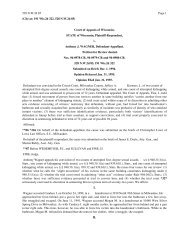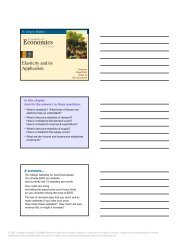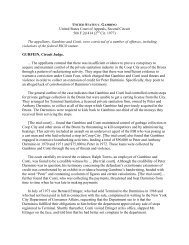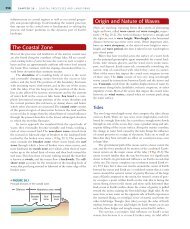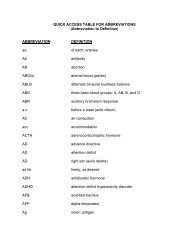Simulink Tutorial on Digital Modulation Methods - Cengage Learning
Simulink Tutorial on Digital Modulation Methods - Cengage Learning
Simulink Tutorial on Digital Modulation Methods - Cengage Learning
You also want an ePaper? Increase the reach of your titles
YUMPU automatically turns print PDFs into web optimized ePapers that Google loves.
13.4. PULSE SHAPING 587<br />
For α = 0.5 the horiz<strong>on</strong>tal eye opening is less than the maximum possible opening of<br />
T.<br />
In AWGN channels the optimum receive filter that maximizes the signal-to-noise<br />
ratio (SNR) is the matched filter<br />
gR(t) = gT (−t) (13.4.4)<br />
C<strong>on</strong>sequently, the maximum SNR at the receive filter output is obtained if the Nyquist<br />
pulse shaping is split equally between the transmit and receive filter. Therefore, the<br />
Fourier transform GT (f ) should have a square-root raised-cosine characteristic (see<br />
Illustrative Problem 6.8).<br />
The impulse resp<strong>on</strong>se and the Fourier transform of a square-root raised-cosine<br />
pulse are given by<br />
gT (t) =<br />
⎧<br />
⎪⎨<br />
GT (f ) =<br />
⎪⎩<br />
(4αt/T ) cos[π(1 + α)t/T ] + sin[π(1 − α)t/T ]<br />
(πt/T )[1 − (4αt/T ) 2 ]<br />
√ T, 0 ≤|f |≤ 1−α<br />
� �<br />
T<br />
2 1 + cos πT<br />
�<br />
α<br />
|f |− 1−α<br />
2T<br />
��<br />
,<br />
1−α<br />
2T<br />
0, |f | > 1+α<br />
2T<br />
2T<br />
< |f |≤ 1+α<br />
2T<br />
(13.4.5)<br />
(13.4.6)<br />
If a square-root raised-cosine transmit filter gT (t) is used, there is zero ISI after the<br />
receive filter but ISI results for the transmitted signal.<br />
13.4.2 Experiments<br />
To start the tutorial go to the directory where you saved the tutorial files and type<br />
DigMod<str<strong>on</strong>g>Tutorial</str<strong>on</strong>g> in the Matlab workspace. The main menu depicted in Figure 13.13<br />
will open. Choose Pulse Shape from the main menu, then NRZ Rectangular in the<br />
menu Pulse Shape (see Figure 13.15):<br />
Pulse Shape > NRZ Rectangular<br />
The pulse shape and the Fourier spectrum of an NRZ rectangular pulse will be displayed<br />
as depicted in Figure 13.16.<br />
TUTORIAL PROBLEM<br />
Problem 13.3 [NRZ Rectangular Pulse]<br />
1. Is the zero ISI c<strong>on</strong>diti<strong>on</strong> met ?<br />
2. An NRZ rectangular pulse has a finite-durati<strong>on</strong> impulse resp<strong>on</strong>se. What does<br />
this mean for the bandwidth?<br />
© 2013 <strong>Cengage</strong> <strong>Learning</strong>. All Rights Reserved. May not be scanned, copied or duplicated, or posted to a publicly accessible website, in whole or in part.



